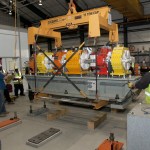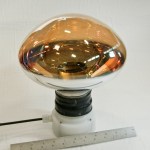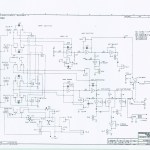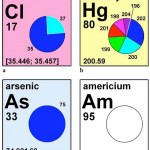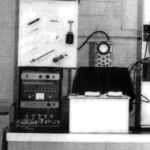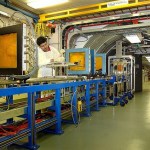
Construction on Brookhaven's National Synchrotron Light Source II (NSLS-II) -- which will allow scientists to explore everything from fuel cell catalysts and soil samples to molecules vital for human life -- has passed the 50-percent completion mark.
The NSLS-II construction site
Work on the half-mile electron racetrack began in 2009 and is now more than a year ahead of schedule. In addition, conventional construction -- which covers everything from the roof and concrete floors to the plumbing and electricity -- is now complete on the first fifth of the ring. This milestone gives the…
How do scientists make glass stronger? Break it.
Brookhaven Lab physicists and engineers take this hands-on approach a step further. In order to strengthen the design of glass bulbs known as photomultiplier tubes, the researchers submerge the devices in 500,000 gallons of pressurized water, punch a small hole through their sides, and watch as the glass cracks, crunches, and, just milliseconds later, implodes (see videos below).
The implosion of a photomultiplier tube in a tank at BNL, as seen through combined high-speed camera images. Time scale: 6,000 frames per second.
Fifty thousand…
Earlier this month, BNL physicist Peter Takacs told you about his progress in resurrecting one of the world's first video games. And you wanted to know, "How do I do that?"
Based on feedback from that post, we've uploaded the original high-resolution schematics for Tennis for Two to the end of this story on Brookhaven's website.
An original schematic for Tennis for Two
We've also included notes from the game's inventor, William Higinbotham, as well as the deposition he gave during a legal battle over the first video game patent (held by Magnavox). So start searching for an analog…
This guest post is written by Norman Holden, a Brookhaven scientist in the National Nuclear Data Center and a member of the International Union of Pure and Applied Chemistry (IUPAC). After receiving his Ph.D. in nuclear physics from the Catholic University of America, he spent a decade at the GE Knolls Atomic Power Lab before joining Brookhaven in 1974. He is the chair of an IUPAC subgroup that is producing a periodic table meant to show high school and college students the importance of isotopes in everyday life.
Norman Holden
When the clock struck midnight on Saturday morning, we rang…
This guest post is written by Peter Takacs, a physicist in Brookhaven Lab's Instrumentation Division. Takacs, who earned his Ph.D. from Johns Hopkins University, joined Brookhaven in 1979.
Peter Takacs
More than a half-century ago, Brookhaven Lab nuclear physicist Willy Higinbotham sought to "liven up the place" with an experiment in entertainment. At BNL's annual open day in 1958, Higinbotham created what is often credited as the world's first video game. Hundreds waited in line for a chance to play "Tennis for Two," an interactive game made from an analog computer, two chunky…
It was July 1976. The nation was busy celebrating its bicentennial, a gallon of gas cost 60 cents, and the Yankees were heading for their first postseason in 12 years, but the real action was at Brookhaven National Laboratory, scene of a life-and-death battle between Spiderman, Doctor Octopus, and the Ghost of Hammerhead.
That's right, The Amazing Spider-Man #158 was set at Brookhaven, as the reader is informed, "on Long Island's thriving North Shore: Usually these quiet buildings are merely devoted to extensive research in the field of atomic energy, but today they are an arena, a…
This one-liner from the 1967 classic "The Graduate" might have made Benjamin Braddock (Dustin Hoffman) cringe:
But 43 years later, it's obvious that Mr. McQuire was onto something. Today, it's hard to imagine life without plastic, from brushing your teeth in the morning to pouring yourself a glass of milk. We produce so much of the stuff, though, that we now face major environmental problems. Conventional plastic is made from crude oil, is not often recycled, and, when put in landfills, can release toxins that enter soil, water, and the food chain.
Researchers at Brookhaven and Dow…
This guest post is written by Brookhaven physicist Thomas Roser, Chair of the Collider-Accelerator Department. Roser, who earned his Ph.D. from the Swiss Federal Institute of Technology, worked at the University of Michigan before joining Brookhaven in 1991.
Thomas Roser
The chain of accelerators that leads into two of Brookhaven's major research facilities - the Relativistic Heavy Ion Collider (RHIC) and the NASA Space Radiation Laboratory (NSRL) - will soon have a new starting point.
A new ion generator, called the Electron Beam Ion Source (EBIS), will produce and accelerate beams…
The steel framework that will house Brookhaven's National Synchrotron Light Source II (NSLS-II) is almost a complete, nearly half-mile ring after the last piece of structural steel was ceremonially signed yesterday afternoon.
Construction workers, Brookhaven employees, and elected officials signed the last remaining piece of structural steel for the NSLS-II ring. This milestone is known as "topping out" in the construction industry.
Just how big is this scientific circle? Big enough to fit the playing field of Yankee Stadium inside -- with so much extra room that you might never see a home…
This guest post is written by BNL theoretical physicist Raju Venugopalan. After earning his Ph.D. from Stony Brook University in 1992, Venugopalan worked at several universities in the United States and at the Niels Bohr Institute in Copenhagen, Denmark, before joining Brookhaven in 1998. He is the leader of the nuclear theory group in Brookhaven's physics department.
Raju Venogopalan
Last week, members of the Compact Muon Solenoid (CMS) collaboration at CERN's Large Hadron Collider (LHC) announced that they've found a phenomenon that's similar to one observed by physicists at Brookhaven…
This guest post is written by BNL cosmologist Anže Slosar. Slosar, who joined Brookhaven's physics department in 2009, received his Ph.D. from Cambridge University in 2003. He previously worked at Lawrence Berkeley National Laboratory, Oxford University, and the University of Ljubljana in Slovenia.
Anže Slosar
Brookhaven Lab is involved in three cosmology experiments aimed at unraveling deep mysteries and inner workings of the universe. Two of these -- the Dark Energy Survey (DES) and Large Synoptic Survey Telescope (LSST) -- won't see "first light" (the beginning of commissioning)…
Silk taffeta, flowing gowns, sheaths, and...a lab coat? It may sound like a fashion faux pas, but these were the makings of NYC-based designer Shin Choi's spring 2000 collection.
At $378, this lab coat should probably be saved for the most special occasions
That season's catalogue, which recently ended up on my desk after a coworker's office-cleaning session, featured a fitting backdrop: intriguing scientific scenes at Brookhaven Lab. Alongside the slender model stands bulbous cryogen tanks, an abandoned bubble chamber, and widgets and gadgets galore.
This shot was taken next to a set of…
This is the first in an occassional series about Brookhaven's Relativistic Heavy Ion Collider, or, as it's affectionately called, RHIC.
Lil John has a theme song for RHIC's latest experimental run.
Sorry, sorry! I couldn't resist. RHIC's actual ditty of the moment goes more like this. (Clean version, of course, RHIC doesn't want any soap in its linac).
RHIC, which has a maximum potential energy of 200 billion electron volts (GeV), collided gold ions at energies as low as 7.7 GeV this spring -- the lowest ever achieved in the machine. But why go so low?
Even at low energies, the gold-gold…
Despite their name, "high-temperature" superconductors require pretty darn cold conditions -- all far below freezing temperatures, some near absolute zero (-273 degrees Celsius) -- to operate without energy loss. As a result, they're not practical for everyday uses like more efficient power transmission -- that is, unless you have a stockpile of liquid helium or nitrogen dewars just hanging around your house.
So why can't we create room-temperature superconductors? That's a question that scientists are still trying to answer.
In research released today in the journal Nature, a team of U.S.…
Thanks to the smart nano detectives out there who took a stab at solving yesterday's picture puzzle.
Mystery image #1, aka the "Nano Vortex," shows the different magnetization directions of an arrangement of nickel and nickel oxide. Captured by Center for Functional Nanomaterials (CFN) scientist Yimei Zhu, this photo reveals the local distribution of electromagnetic potential. The ability to directly observe electromagnetic properties at the nanoscale may help scientists engineer new materials that rely on magnetic spin - rather than just electric charge - to control electric current. Such "…
It's time for a little fun. Well, that is, if you consider marveling at modern-art-esque images of extremely small (i.e. on the order of billionths of a meter) materials fun. I do, so I'll assume I'm not alone here.
Take a gander at these two nano images produced at Brookhaven. What are they? Why don't you tell me? Post your best guesses below. The winner gets 10 BNL Nerd Points.* I'll post the answers tomorrow.
Mystery nanomaterial #1
Mystery nanomaterial #2
*Obligatory small print: No cash value. Cannot be used in lieu of a thesis defense, as payment for your graduate student, or as a…
Based on some of the (many) comments spurred by the appearance of PepsiCo on ScienceBlogs, we want to clarify Brookhaven's involvement on this site.
In April, Brookhaven was invited by ScienceBlogs editors to join the community as an institutional blogger, along with the Weizmann Institute of Science and the SETI Institute (and later, CERN and the Howard Hughes Medical Institute).
There's no money being exchanged between Brookhaven and ScienceBlogs.
Of course, we see this as a good public relations opportunity. But that doesn't mean that this space will only be used to redistribute press…
If you're American, chances are you'll be looking up this weekend for a spectacle of physics. But you also can look down from above -- way, way above -- to see the homes of some of the greatest physics experiments on Earth.
Brookhaven's Relativistic Heavy Ion Collider (RHIC) is probably one of the most visible particle accelerators from space.
Check out this satellite shot from 1982, when construction was underway for RHIC's predecessor, ISABELLE:
And this more recent aerial shot, taken in May:
RHIC is the first machine in the world capable of colliding heavy ions, which are atoms that…
It was a time of fierce (but friendly) international competition, when physicists still built things with their own two hands. Dotted with barracks and trenches, Brookhaven was yet to fully transform its face from army camp to research institution.
In the early 1950s, the physics community was at the horizon of the boom of discoveries that define our understanding of the universe.
Before quarks, neutrinos, and CP violation could be found, scientists needed a tool much more powerful than Brookhaven's Cosmotron -- the leading particle accelerator of the time. The problem: building an…
A little more than one year ago, on the day of its groundbreaking ceremony, the National Synchrotron Light Source II (NSLS-II) construction site was nothing more than a whole lot of dirt. Today, it's...well, take a look for yourself.
The NSLS-II construction site on the day of the groundbreaking ceremony, June 15, 2009, and...
...exactly one year later
Construction is quickly progressing on the $912 million facility, which will be the world's most brilliant light source. Eh, what's a "light source?" Basically, it's a particle accelerator that, in a controlled manner, sheds light of…
